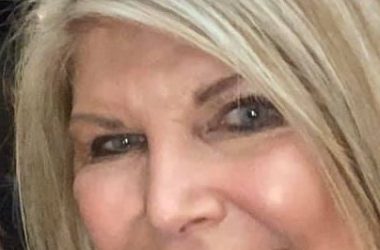The passage of the National Labor Relations Act, otherwise known as the “Wagner Act” after its chief sponsor Senator Robert R. Wagner of New York occurred in 1935. FDR signed it into law on July 5 of that year. The Act, which for the most part only dealt with the creation of the NLRB and the rights of workers to organize and collectively bargain with their employers, was much simpler than the NIRA, which dealt with a myriad of topics, and was thus less apt to successful constitutional challenge. (The Constitutionality of the NLRA was upheld by the U.S. Supreme Court in National Labor Relations Board v. Jones and Laughlin Steel Corp., 301 U.S. 1, (1937) One of the basic provisions of the act provided that the creation, maintenance, etc. by an employer of an employer dominated union was an unfair labor practice which was subject to being enjoined. Thus the Wagner Act provided a new avenue for organized labor to attempt to represent the workers at Weirton Steel.
The ink was barely dry on the J&L decision when the Amalgamated, through its Steel Workers Organizing Committee (“SWOC”), filed unfair labor practice charges against Weirton Steel. The essence of the charges stressed that the Weirton Steel Employees Security League which succeeded the prior Employee Representation Plan was a “company dominated” labor organization and that the Company was discriminating against a group of former employees, that it had fired for attempting to organize for the Amalgamated, and others fired, or not hired, for their membership in the SWOC. Reading from the decisions of the NLRB and the Courts, as well as written accounts, the case was one of the most contentious of the day. The fight lasted about fifteen years but began with hearings in New Cumberland on August 16, 1937. The hearing examiner was Edward Grandison Smith a sixty-nine year old Clarksburg lawyer who was also president of the West Virginia University Board of Regents. Clyde A. Armstrong and Donald Ebbert of Thorp, Bostwick, Reed and Armstrong were the attorneys for Weirton Steel. These hearings went on for seventeen months with the site moving periodically from New Cumberland to Steubenville, Pittsburgh and Washington D.C. Fights broke out in hearings between company and government lawyers, and I mean fistfights. Parades and other types of demonstrations were held at which dummies representing government officials or the hearing examiners were “hung in effigy.”
Attorney Armstrong felt strongly that Hearing Examiner Smith was consciously biased against the Company, and was allowing the government lawyers and witnesses to proceed at will while severely restricting the Company’s questioning and evidence. The series of heated exchanges over these rulings led Hearing Examiner Smith to remove Armstrong from the case and bar him from further participation in the case.
While the action against Attorney Armstrong was upheld, Smith was replaced shortly thereafter by a new Hearing Examiner. One of the legends that I had heard during my time at Weirton Steel was that Attorney Ebbert had managed to bug a government official’s room at the Fort Steuben Hotel and somehow changed the course of the case. A recent book “The Steel Bar Pittsburgh Lawyers and the Making of America” by Ronald William Shuler, himself an accomplished Pittsburgh attorney, delivers a similar story. He attributes to a former Thorp Reed associate that Don Ebbert claimed that “Weirton Steel had installed a bug in Edward Grandison Smith’s hotel room, and that the company caught the hearing examiner talking with the SWOC organizers and their counsel ‘colluding as to how they were going to proceed in the case.’” Shuler, Page 309. As stated above hearing examiner Smith was removed and replaced, without any comment that I have found and the new hearing examiner offered the Company the opportunity to introduce any evidence and witnesses which it felt that hearing examiner Smith wrongfully excluded.
The hearings produced 39,000 pages of witness testimony. Preliminary findings were issued in 1940. Both sides objected, which led to a full NLRB hearing. A Final decision of the Board was handed down on June 25, 1941. Its 125 pages can be found at 32 N.L.R.B. 1145. The ruling covered several issues. It found the League to be an employer dominated labor organization and banned it. Then it goes on for many pages to cover the events in Weirton occurring from 1935 and following. Of special interest is the description of a series of alleged assaults on SWOC organizers allegedly perpetrated by a group of Company employees and League members known as the “Special Watchmen.” The opinion names many of the organizers and the Watchmen. Weirton Steel acknowledged the existence of the group but maintained it was just present with regular guards at the gates to prevent employees entering and leaving the mill from being harassed by SWOC organizers. (However, I would note that during some work in the lower level of one of the Company’s buildings in the early 1980’s a vault was opened which contained about a dozen Thompson Sub-Machine guns, apparently forgotten for many years.) Further the opinion goes on to describe the activities of the Weirton Steel Bulletin as being frequently defamatory of Unions. As well it blasts parades and other activities of an organization called the “Community League” which was founded by the Weirton Chamber of Commerce. At the end of the day the Board ruling also required the reinstatement of seventeen fired SWOC members, whose ”eviction” from the mill had been accomplished by violence or threats of violence from their co-workers or plant guards or Watchmen. The NLRB ordered the cessation of prohibited activities and required the Company to post and otherwise provide notices that its employees were free to exercise their right to organize and to join and be represented by the Amalgamated.
As Shakespeare said: “Aye, there’s the rub.”
Of course an appeal ensued. While most of the findings were upheld, a crucial one was changed. The Court required the notice to employees to be changed to provide that employees were free to join and be represented by the Amalgamated or any other labor organization of their choosing. When next there was an election, the employees made their choice. For collective bargaining purposes they chose to be represented by an entity known as the Weirton Independent Union not the Amalgamated (USW), but truly a labor organization of their choice.

